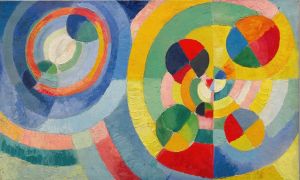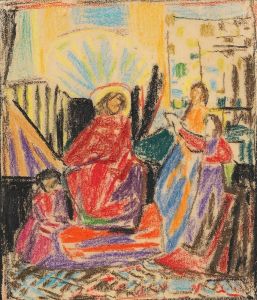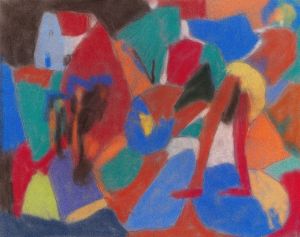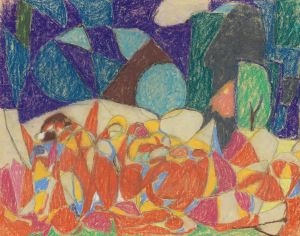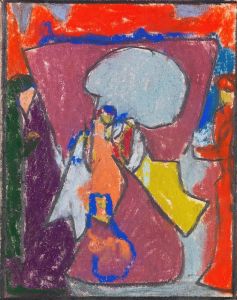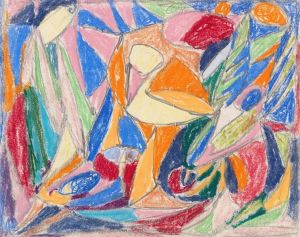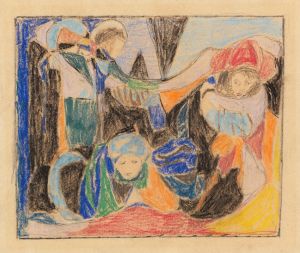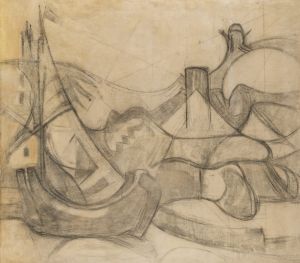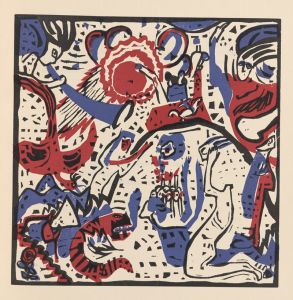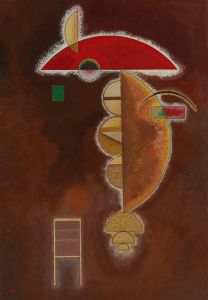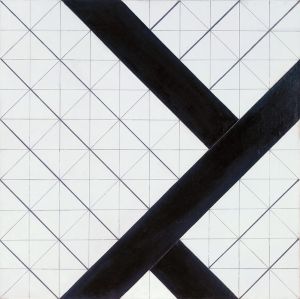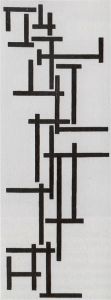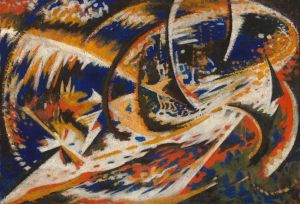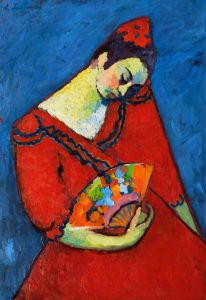
Dynamische Kreisrhythmen
A hand-painted replica of Adolf Hölzel’s masterpiece Dynamische Kreisrhythmen, meticulously crafted by professional artists to capture the true essence of the original. Each piece is created with museum-quality canvas and rare mineral pigments, carefully painted by experienced artists with delicate brushstrokes and rich, layered colors to perfectly recreate the texture of the original artwork. Unlike machine-printed reproductions, this hand-painted version brings the painting to life, infused with the artist’s emotions and skill in every stroke. Whether for personal collection or home decoration, it instantly elevates the artistic atmosphere of any space.
Adolf Hölzel's painting Dynamische Kreisrhythmen (Dynamic Circle Rhythms) is a notable example of his contribution to abstract art in the early 20th century. Hölzel, a German painter and influential art theorist, was a pioneer in exploring non-representational forms and the use of color and composition to evoke rhythm and harmony. This work reflects his deep interest in the interplay of geometric shapes, particularly circles, and their dynamic relationships within a composition.
Created during a period when Hölzel was actively developing his theories on abstraction, Dynamische Kreisrhythmen exemplifies his belief in the spiritual and emotional power of art. He sought to move beyond traditional representational art, focusing instead on the intrinsic qualities of form, color, and rhythm. The painting features overlapping and intersecting circular forms, arranged in a way that suggests movement and energy. The use of vibrant colors and the careful balance of shapes create a sense of visual rhythm, aligning with Hölzel's theoretical emphasis on the "laws of harmony" in art.
Hölzel was a key figure in the transition from representational to abstract art in Europe. As a teacher at the Stuttgart Academy of Fine Arts, he influenced a generation of artists, including Oskar Schlemmer, Johannes Itten, and Willi Baumeister, who would go on to play significant roles in modern art movements such as Bauhaus. His theoretical writings and teachings emphasized the importance of composition, color theory, and the spiritual dimension of art, which are evident in works like Dynamische Kreisrhythmen.
While specific details about the creation date or the current location of Dynamische Kreisrhythmen are not widely documented, the painting is often cited as an example of Hölzel's mature abstract style. It reflects his innovative approach to art, which combined elements of Symbolism, Expressionism, and early abstraction. Hölzel's work, including this piece, laid the groundwork for later developments in abstract art and continues to be studied for its theoretical and aesthetic contributions.
In summary, Dynamische Kreisrhythmen is a significant work within Adolf Hölzel's oeuvre, showcasing his pioneering efforts in abstract art and his exploration of rhythm, form, and color. It stands as a testament to his influence on modern art and his role in shaping the direction of abstraction in the early 20th century.





